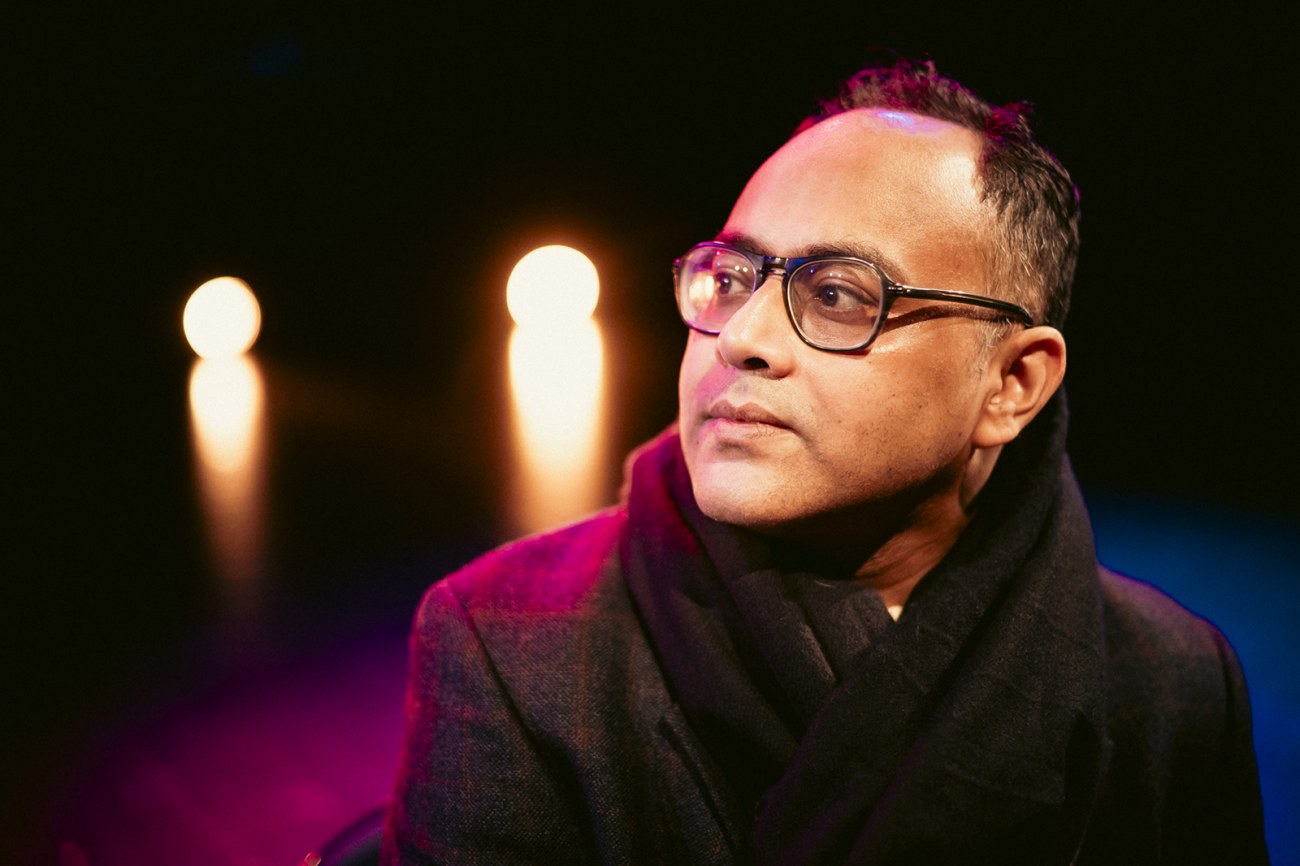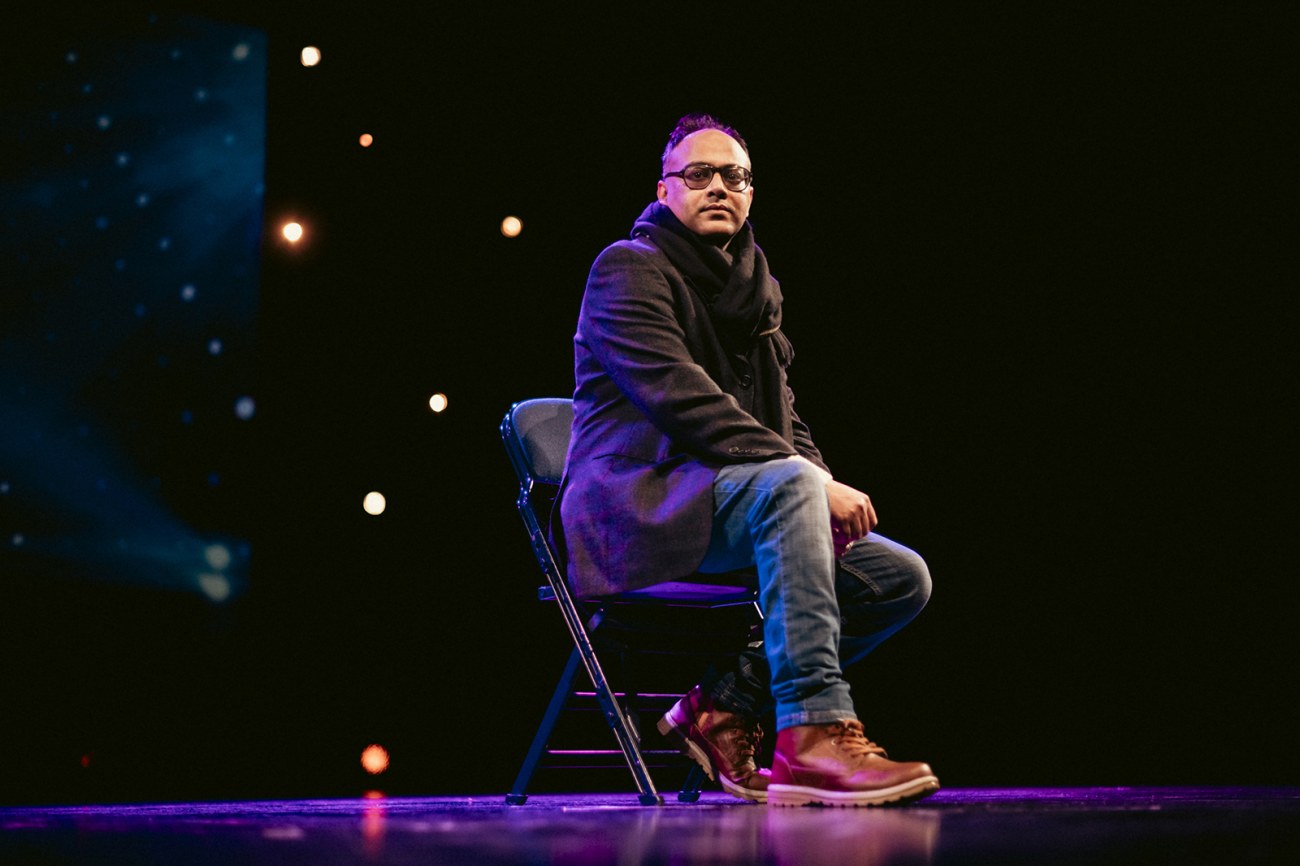Virtual spaces offer new ways of political expression, which is why doctoral researcher Suman Ghosh is building a virtual museum of protest art

Hailing from Kolkata – often referred to as the cultural capital of India – Suman Ghosh brings a unique blend of visual artistry and democratic engagement to his work. "I decided to start my academic adventure into the convergence of art, political or democratic participation and virtual environments at the somewhat ripe age of 40," Ghosh explains, reflecting on his two decades in India's bustling newsrooms, where he worked as a visualiser and creative director and witnessed first-hand the shift from print to digital media.
Today, virtual spaces offer a new frontier for political expression. Ghosh's work at Tampere University not only highlights the critical role of digital platforms in contemporary political and social spheres but also signals a significant shift in how we understand and engage with technology and art in shaping democratic spaces.
 Photo: Antti Yrjönen
Photo: Antti Yrjönen"I was very interested in how people can harness the power of technological spaces to claim an equal, inclusive and democratic space for themselves," Ghosh explains. "As we all head towards a more cyborgian reality, this is a question worth investigating.”
Ghosh's research journey was particularly influenced by the global upheavals a few years ago, including mass protests from Hong Kong Protests to the Black Lives Matter campaigns and the protests against the Citizenship Amendment Act in India. These movements, along with the dramatic societal changes brought about by COVID-19, highlighted the evolving role of digital spaces in political engagement.
"When physical mobilities are restricted, be it for COVID-19 lockdowns or government-imposed curfews, online spaces open up to offer the mobility and accessibility required for the democratic participation of the public in political events," he notes.
At Tampere University's 'The CONVERGENCE of Humans and Machines' project, Ghosh is immersed in a multidisciplinary team that delves deep into affective computing, augmented reality and AI, among other areas. Here, he finds himself at the vanguard of exploring how technology can facilitate a more inclusive and democratic expression through virtual environments.
"My project aims to bridge the gap between different disciplinary paradigms, and this research programme offered exactly what I was hoping to achieve through my research," he says, crediting his supervisors, Professors Kaarina Nikunen and Markku Turunen, for guiding him to this innovative research group.
Ghosh's research includes creating a virtual museum of protest art. “I am creating a virtual museum of protest art of the people, by the people, and for the people," as he puts it. This project aims to challenge traditional hegemonies in art and make political art more accessible and engaging through technology.
One of the pivotal moments in his career came during the initial COVID-19 lockdowns in India, when the government whitewashed street art from protest sites. "I found the act very symbolic. It was as if the health emergency was used as a pretext to repress public expression," Ghosh remarks.
This led him to look more closely at the virtual representation of protests, where online artefacts such as memes and photos continue to stimulate public engagement long after physical demonstrations have ended. “The virtual protest perhaps engaged more of the public than the physical sites.”
Ghosh envisions a future where human-machine interactions are seamlessly integrated, enhancing everyday experiences through advanced AI.
Augmented reality and brain-machine interfaces will enhance experiences, fostering a symbiotic relationship between humans and machines, where technology becomes an extension of human capabilities, improving productivity and enriching lives."
Suman Ghosh
The multidisciplinary environment at CONVERGENCE, according to Ghosh, is vital for fostering innovation and holistic problem-solving. "Human-machine research requires the collaboration of experts from different fields to achieve holistic problem solving and foster creative solutions, which CONVERGENCE facilitates. This dynamic synergy accelerates discoveries and cultivates a rich tapestry of ideas," he enthuses.
Suman Ghosh's journey to Finland was driven by a passion for his research, but the country itself offered unexpected delights. "More than the country, I was excited to have the opportunity to work on what I was passionate about," he explains. Despite initial warnings about the cold and darkness, he found them to be unfounded. "The sauna kept me warm and the northern lights filled the sky with light. Finland is kind, straightforward and honest, and I have loved my time here," he reflects.
 Photo: Antti Yrjönen
Photo: Antti Yrjönen
This series of articles introduces the doctoral researchers of the CONVERGENCE project at Tampere University, an initiative blending natural sciences and engineering with social sciences and humanities. CONVERGENCE aims to bridge the gap between technology and humanity, exploring areas like affective computing, augmented reality, and AI. You can read more on the project website.
Funded by the Jane and Aatos Erkko Foundation.
Text and photos by Antti Yrjönen
Stage and lights by Carlos Portilla Lopez
Venue Teatterimonttu, Tampere University, City Centre Campus













